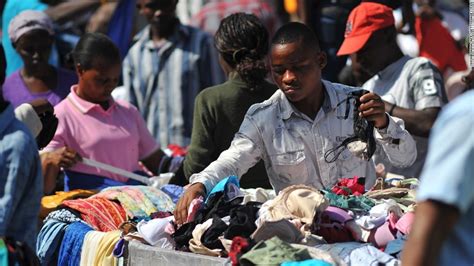In a world increasingly concerned with sustainability and ethical consumption, the act of donating used clothing seems like a win-win: you declutter your wardrobe and someone in need gains access to affordable apparel. However, as the situation in several African countries reveals, this philanthropic gesture is fraught with complications that may undermine local economies and contribute to a burgeoning waste problem. The term ‘mitumba’, referring to secondhand clothing in Swahili-speaking regions, has become a symbol of both benevolence and adversity.
The influx of secondhand clothes into African markets can be traced back to various international charities and non-governmental organizations (NGOs) that collect clothes from more affluent countries and redistribute them in the Global South. While the initial intent is often altruistic, the long-term impacts are far more complex. Used clothes can undermine local textile and garment industries, preventing these sectors from growing and flourishing. Imagine being a small local business owner, trying to compete with the sheer volume and low prices of donated clothes from abroad. It’s not just competition; it’s akin to the ‘dumping’ phenomenon where surplus goods are sold at below-market rates to another country, disrupting local markets.
Interestingly, some commenters noted that the demand for these used clothes is increasingly artificial. This demand is sometimes propped up by economic or political pressures. For example, when East African countries attempted to ban the import of secondhand clothes in 2016, the move was met with severe pushback from international actors, including economic threats from the Trump administration. Such dynamics illustrate how intertwined global trade policies can be with local economic realities. Prohibiting imports of used clothing might seem like a straightforward solution, but it is not without consequences.
Despite these challenges, there is an argument to be made for market-based solutions. Some suggest taxing the import of secondhand clothes and using the revenue to bolster local recycling and waste management infrastructure. This approach could mitigate some of the negative environmental impacts while still allowing for the availability of affordable clothing. After all, not all clothes in these imports are landfill-bound; many find a second life and are highly valued by local consumers who cannot afford new garments. Local vendors often recondition these clothes for resale, effectively creating a micro-economy around these donated goods.
Of course, addressing the ‘mitumba’ issue involves more than just policy adjustments; it also demands a shift in consumer behavior both locally and globally. Higher quality, longer-lasting clothing, and local manufacturing should be promoted. Brands like Patagonia and REI already have initiatives to buy back and resell their products, making a case for a more circular economy. However, the responsibility also lies with international donors to rethink their approach to charity. One viable alternative could be investing in local industries directly rather than flooding the market with free goods.
Tying into all of this is the challenge of managing waste. Many African countries lack the infrastructure to deal with the vast quantities of unsellable secondhand clothes that eventually end up in landfills. Here lies another conundrum: while some argue that stopping the influx of these garments is essential, others believe that the waste issue should be tackled through improved local waste management solutions. This dichotomy further complicates finding a straightforward resolution to the problem.
In considering solutions, lessons can be taken from Rwanda, the only East African country that maintained its stand against secondhand clothing imports despite facing economic pushback. Rwanda invested heavily in its local textile industry, showcasing that it is possible to resist global pressures if there is sufficient government backing and a focus on developing local capabilities. The broader question remains: how can other African nations emulate this success without jeopardizing their current economic ties and risking retaliation?
The reality is that Africa’s secondhand clothing dilemma is a complex issue requiring a multifaceted approach. It involves nuanced policy-making, local industry support, responsible consumer behavior, and international cooperation. The path forward may be challenging, but with thoughtful interventions and a commitment to understanding the intricate dynamics at play, it is possible to foster both economic development and sustainability. Perhaps what is most needed is a paradigm shift—viewing African nations not just as recipients of aid but as equal partners in global trade and industry. Only then can the cycle of dependency be broken, paving the way for true economic independence and growth.


Leave a Reply